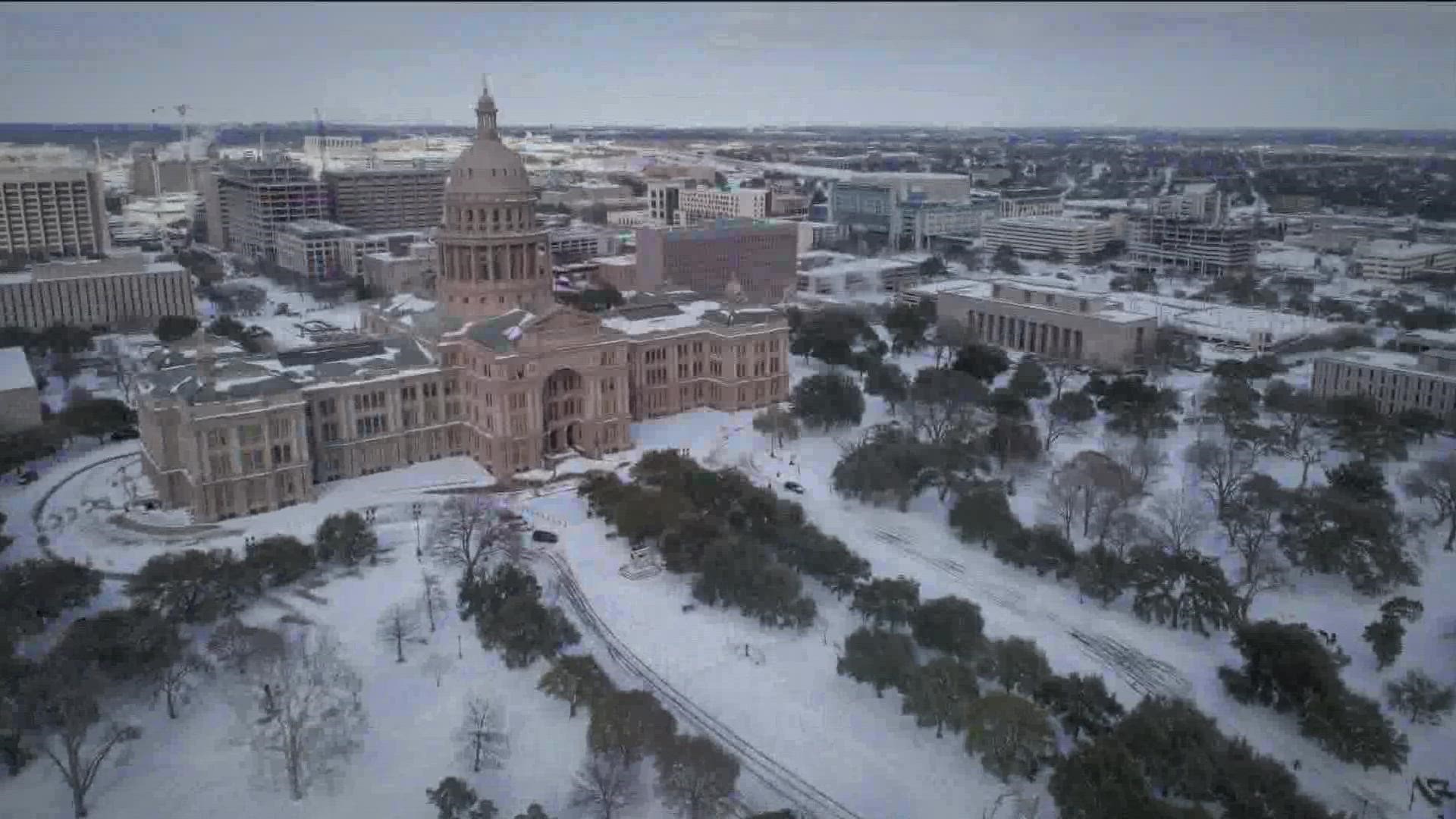AUSTIN, Texas — Public Utility Commission of Texas (PUC) staff released its report to the 88th Legislature listing improvements to the State’s power grid.
This stems from a deadly winter storm Feb. 2021. Millions lost power. Hundreds died and temperatures remained in single digits for days.
The Electric Reliability Council of Texas (ERCOT) manages the power grid covering most of the State. El Paso, part of the Texas Panhandle, and part of East Texas are connected to the federal power grid.
Investigations revealed frozen equipment and low fuel supply among the reasons why the ERCOT could not meet the energy demand.
After the storm, Texas lawmakers passed bills directing the PUC and the Texas Railroad Commission to create weatherization standards and make other reliability improvements to strengthen the power grid.
With all new commissioners at PUC, the agency reorganized.
A report to the Texas Legislature shows the agency created new divisions to include Compliance and Enforcement, Rules and Projects, Multi-Language Team, Enhanced Communications and Office of Public Engagement.
The 91-page report lays out the PUC’s response to the February 2021 winter storm, changes to telecommunications and what the agency has done with water/sewer regulations.
In addition to creating and enforcing weatherization standards, the report shows PUC helped create a map to identify critical electricity supply lines and helped create a power outage statewide alert system.
"The Commission held five emergency Open Meetings to address Uri-related issues between February 15 and February 21. During these meetings the Commission issued a series of orders focused on wholesale market pricing issues in ERCOT and providing ERCOT with discretion to resolve financial obligations resulting from the event," the PUC report read.
PUC staff also point to immediate public relief following the storm.
"The Commission suspended disconnects for nonpayment, waived late fees, and reaffirmed the requirement to offer deferred payment plans to customers that remained in effect due to the Covid-19 pandemic. For electric customers in areas open to competition, the Commission opened the process for REPs to volunteer to offer Provider of Last Resort (POLR) service as financially distraught REPs began to exit the market. This helped provide retail market stability and guarantee competitive rates to affected customers. Many of these actions have been codified in rulemakings to provide immediate relief in any future emergency events," the PUC report states.
The report lists “emerging issues” the staff is currently working on, such as energy storage.
But the North American Electric Reliability Corporation (NERC) released a report showing the changes are not enough.
NERC released its Long-Term Reliability Assessment on Dec. 15.
“A high number of forced outages of the thermal and wind generation fleet have been an issue in severe winter weather. Improved generator availability resulting from winter preparedness programs and reforms implemented by Texas regulators, ERCOT, and Generator Owners since February 2021 are expected to reduce the risk that electricity supplies will be insufficient during a severe winter storm,” the NERC report states.
The NERC report addresses energy consumption. PUC has not changed the State’s energy efficiency standards nor focused on public energy conservation programs. ERCOT pays large industries to cut power during high demand. They recently called on volunteers from other entities to set up an unpaid agreement.
“Though typical winters in Texas are mild and pose little risk of energy shortfalls, extreme winter weather similar to Winter Storm Uri in February 2021 are likely to challenge grid operators to maintain reliability in the near-term,” the NERC report states.
The amount of energy we consume as a state in the summer on an average hot day to an extremely hot day doesn’t vary widely, the report shows. Plus, solar power is available.
But, it shows, the peak demand on an average cold versus an extreme cold does vary widely. Since the winter peak usage is usually early morning, solar is not available. NERC staff wrote that this makes long-range weather and demand forecasting more important to make sure there are enough resources readily available.
“Demand must be met primarily with the fleet of thermal and wind generators. In Texas and other parts of the South that do not experience harsh winters each year, high forced outages of the thermal and wind generation fleet has been a common issue when extreme weather events have led to energy emergencies, causing generator component freezing, fuel supply disruption to natural gas and coal-fired plants, and wind generator protection cut-outs,” the NERC report states.
NERC recommends developing requirements to address energy risks in operations and planning.
“NERC’s Reliability Standards Project 2022-03 should be closely monitored, and stakeholder experts should contribute to developing effective requirements for entities to assess energy risks and implement corrective actions in all time horizons. State and provincial regulators and ISO/ RTO) should have mechanisms they can employ to prevent retirement of generators that they determine are needed for reliability, including the management of energy shortfall risks,” the NERC report shows.
ERCOT and PUC are still in the process of changing and implementing energy standards for the State.

